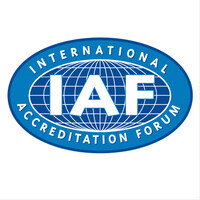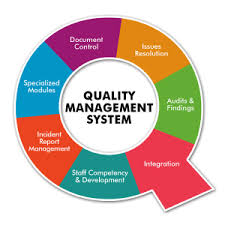
What is ISO ?
ISO stands for International Organization for Standardization , its headquarter is in Geneva ,Switzerland. The term “ISO” is a Greek word, it means equal or similar. It is a worldwide common platform for issuance or formulation of different Management Systems, Products , Personal and Laboratories International Standards.

What is IAF ?
More than 170 countries have formed one forum that’s International Accreditation Forum(IAF) to appoint the Accreditation Body and then the Accreditation Body is engaging the Certification Body to do the conformity assessment/audit at different Organizations before issuing the intended Certification.

About ISO 9001:2015 (Quality Management System):
ISO had launched its first standard in the year 1987, i.e. ISO 9000 series for Quality Management System (QMS). Since, ISO had upgraded its standard on regular 6 to 8 years interval. So, its Second version came in the year 1994 and third version was in the year 2000. Fourth came in 2008 and the fifth and current version was introduced in the year 2015, that is ISO 9001:2015 Standard for Quality Management System. So here, “9001” is the series and “2015” is the version.
Moreover, ISO has introduced various international standards for different Management Systems for the Industries or Organizations, i.e. ISO 14001:2015 Standard for Environment Management System, ISO 45001:2018 for Occupational Health & Safety Management System, ISO 50001:2018 Standard for Energy Management System ,ISO 22000:2018 for Food Safety Management System etc.
ISO 9001 introduces or depicts the Process Approach and it is based on the PLAN-DO-CHECK-ACT (PDCA) cycle and Risk based thinking.
By introducing the PDCA cycle & Process Approach, the Organization can understand that each of its processes are adequately resourced and well managed. Process Approach helps the Organization to control the interrelated or interrelationships and dependence among different processes to produce the Quality products or services and to do the continual improvement or to enhance the customer satisfaction.
Risk based thinking helps the Organization to determine or assess the risks involves into the identified external & internal issues in their each process and to eliminate or minimize the intensity or the negative effects of risk and convert those into opportunities where possible to produce the Quality outputs and of-course to fulfill the customer requirements by achieving the intended results repeatedly or consistently.
The Quality Management System is based on the 7 nos. of Principles (C-L-E-P-I-E-R), by applying those Organization’s performance can be improved, principles are:
C- Customer Focus
L- Leadership
E- Engagement of People
P-Process Approach
I-Improvement
E- Evidenced-based Decision Making
R-Relationship Management.
ISO 9001:2015 Standard is having clause no. 1 to 10 and its requirements are depicted in the Audit able Clause no. 4 to 10.
Clause No.4 -Context of the Organization
Clause No.5 -Leadership 
Clause No.6-Planning
Clause No.7-Support
Clause No.8-Operation
Clause No.9-Performance Evaluation
Clause No.10-Improvement
What are the benefits of ISO 9001 (Quality Management System) Certification?
By implementing the Quality Management System as per the requirements of ISO 9001:2015 Standard, Organization can get various benefits to run their operation or business, such as:
1) Ability to provide the Good Quality of Products or Services consistently or repeatedly and establish better internal management.
2) International Recognition and get an edge over competitors to procure orders or attend different national or International tenders.
3) Good Production or Service Plan to reduce the wastage of raw materials and increase the profitability.
4) Learn the Good time management,maintain the delivery schedule and increase the overall productivity & profit.
5) Usage of different Resources efficiently and less no. of human errors.
6) More Skilled or trained Employees and better individual or collective performances.
7) It will be based on structure and Reduce the individual importance. More System driven rather than human driven.
8) Improved Relationship management with relevant Interested Parties which includes statutory or regulatory bodies, customers, external providers/vendors, employees, neighbours etc.
9) Achieve the anticipated or intended or time bound outcome most of the time due to mainly good planning and of-course by following the PDCA (Plan-Do-Check-Act) cycle.
10) By assessing the risks of different identified issues in advance can reduce the intensity or negative impacts on daily operation.
11) Skilled employees can get the better value or weight-age in their respective department or section.
12) Less no. of machine or equipment failure or breakdown incidents and reduce the machine down time & increase the total throughput.
13) Less error in measurement due to the usage of calibrated instruments.
14) Analysis or monitoring the customer feedback can increase the customer satisfaction.
15) By setting the SMART( Specific,Measurable,Achievable, Realistic & Time-bound) Objectives, establishing the management programs and subsequent good monitoring or measuring of the Key Performance Indicators(KPI), by doing the necessary correction and corrective action, Organization be able to do the continual Improvement in all respects.
The major steps or process flow to get the ISO 9001:2015 Certification:
1) Introduction & familiarization with ISO 9001:2015 Standard for the implementation of Quality Management System in the organization.
2) Gap Analysis between the Organizations existing standard and the international standard (ISO 9001).
3) Establish & Document the required Documented Information and do the implementation.
4) Select the ISO Certification Body.
5) Application to be for the ISO 9001:2015 Certification.
6) Price negotiation with the Certification Body.
7) Pre-assessment to be done (if required).
8) Document Review to be.
9) Conduct the Certification Stage 1 Audit mainly document review and site visit also.
10) Actions taken on all the identified Areas of concern to get ready for the Certification Stage 2 Audit.
11) Conduct the Certification Stage 2 Audit.
12) Closure of Non-conformity & follow up audit (if any)
13) Review of Audit reports by Certification Body and issuance of Certificate for 3 years.
14) Surveillance 1 & 2 Audits to be in the 2nd and 3rd years respectively as per schedule.
15) Re-certification after 3 years.
What is the documented Information (documents/ records) to be required to implement the QMS (ISO 9001:2015)?
For the ISO 9001:2015 Certification, the following maintain and retain documented information to be kept:
1) QMS Manual , including the determined & maintained Scope ( as in clause no.4.3)
2) Procedure for determination of External & Internal issues and understanding & reviewing the needs of relevant interested parties. (4.1 & 4.2)
3) Quality Policy shall be maintained as Documented Information (DI). (5.2)
4) Procedure frameworks for Actions to address the Risks and Opportunities process or issue wise. (6.1)
5) Quality Objectives shall be maintained as DI. (6.2)
6) Measurement traceability (calibration) details shall be retained as DI. (7.1.5.2)
7) Competency details shall be retained as DI. (7.2)
8) Review of the requirements for products and services shall be retained as DI. (8.2.3)
9) Design & Development inputs, controls, outputs and changes details shall be retained as DI (if applicable).(8.3)
10) Selection, evaluation, monitoring of performance details of external providers shall be retained as DI. (8.4)
11) Customers or external providers’ property lost or damaged details shall retained as DI. (8.5.3)
12) Review and control of changes for production or service provision details shall be retained as DI. (8.5.6)
13) Release of products or services details shall be retained as DI. (8.6)
14) Non-conforming outputs details shall be retained as DI. (8.7)
15) Performance evaluation and effectiveness of QMS details shall be retained as DI. (9.1)
16) Internal Audit details shall be retained as DI. (9.2)
17) Management Reviews details shall be retained as DI. (9.3)
18) Actions taken on non-conformity and the results of any corrective action details shall be retained as DI. (10.2)
written by Ranajit Bhattacharyya ISO Auditor & Trainer
For more you may write to ranajitbdigital.com@gmail.com and submit this form by making comments.

Excellent publish, very informative. You should continue your writing. I am sure, you have a huge readers’ base already.